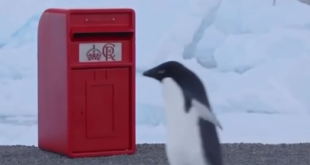The British ocean liner-turned-troopship Arcadian, torpedoed by a German submarine during WW1 with the loss of 279 lives, has been discovered 163m deep in Greece’s Cyclades Islands.
The wreck of the 152m ship was found south-east of Sifnos by wreck-researcher Kostas Thoctarides, often associated with submarine discoveries but in this case using sonar and then an ROV to pinpoint and investigate a U-boat victim.

Last month Divernet reported on Thoctarides’ discovery of the bow of the WW2 Italian submarine Jantina off Mykonos, another Cyclades island in the Aegean Sea.
He has described the Arcadian as a time capsule preserved in excellent condition and “one of the most impressive shipwrecks in the Greek area”. He attributes much of the ship’s standard of preservation to the quality of metals used in its construction.
She was built as Ortona in 1899 by Vickers, Sons & Maxim at Barrow-in-Furness for the Pacific Steam Navigation Co, and initially sailed between London and Australia.

In 1910 she was converted by Harland & Wolff in Belfast to carry 320 passengers and renamed RMS Arcadian. With a new gross tonnage of 8,939, she was the world’s biggest dedicated cruise ship of the time, sailing with the Royal Mail Steam Packet Co. Her two propellers were driven by a triple-expansion steam engine and cruising speed was 14 knots.
Arcadian was chartered by the Royal Navy in February 1915 and served as a troop ship in the Mediterranean.
Predictable pattern
On the evening of 15 April, 1917 she was under escort transporting 1,155 military personnel from Thessaloniki to Alexandria in Egypt, and diverting through the Cyclades in an attempt to evade a detected U-boat. She was zig-zagging but in what proved to be too predictable a pattern.
At 5.44pm UC-74, a submarine that would sink 37 ships during WW1, fired a torpedo that struck the Arcadian to starboard between bridge and foremast. The explosion destroyed a number of the lifeboats.
Captain Charles Lane Willats ordered the launch of the remaining boats as the ship listed to port. She then righted herself but within six minutes she had sunk. There was time to lower only four of the boats so they were overcrowded, and many of those below decks could not be saved.

A total of 1,058 of those onboard were subsequently rescued, some after up to five hours in the sea, and 233 troops died along with 34 crew, 10 naval personnel and two civilians. Twice-a-day boat drills and strict wearing of lifebelts were later judged to have saved many lives.




For Captain Willats, who survived the sinking, it was his fourth sinking in the past two years: in 1915, as captain of the Pembrokeshire in the Canary Islands; in January 1917 under enemy attack on the cargo ship Radnorshire in the South Atlantic; and again while heading home from captivity in Brazil on the DRINA submarine.
One of his surviving crew, Thomas Threlfall, had also been shipwrecked previously – exactly five years before. “It was the same day and the same month the Titanic sank, but in both cases I came out alive!” he said later.
Compression of the ship’s bow as it hit the seabed can be seen in the deformed plates but helped to align the hull at the bottom so that it remained upright and balanced, says Thoctarides.
He reported that the crack caused by the torpedo in the starboard hull was visible and that, although marine life on the wreck was sparse, large quantities of ghost-fishing gear had accumulated, obscuring many of the ship’s features.


The two masts had fallen to right and left, with the crow’s nest on the foremast still visible, as were the lifeboat davits. The two funnels had also collapsed.
Thoctarides carried out extensive research in British and German archives to help him locate the Arcadian. The wreck researcher started out as a commercial diver in 1987, and runs the companies ROV Services and the Planet Blue dive-centre at Lavrio near Athens.
Also on Divernet: Greek sub-hunter finds missing bow, Sub-hunter tracks down HMS Triumph off Greece, Greek wreck-hunter solves 1959 mystery, The O2 Rebreather Miracle
Source link



